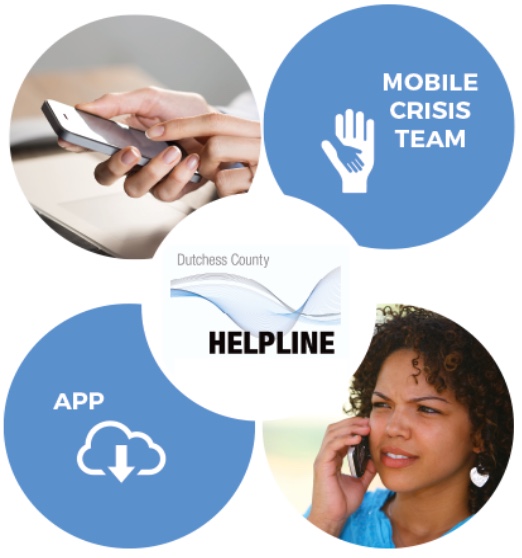What Happened at the Board of Education Meeting January 11, 2016, andan Interview with Dr. Walkley
/Something has been brewing in Beacon for quite some time, and it is all coming to a head now. The escalating situation - discussed among parents, teachers, and district administrators over several years - has now caught the attention of regional media after a parent (who is also a lawyer) filed a petition asking that the board remove Beacon's current superintendent.
[UPDATE] 1/22/16: After a Special Board of Education meeting was called on 1/21/16, Dr. Walkley handed in her resignation. A statement was given by the board via press release stating that they "accepted, with regret" her resignation and that they appreciated her work for the students of the Beacon City School District over the course of different periods where she served in interim positions. The Board of Education has appointed Deputy Superintendent Ann Marie Quartironi to serve as Interim Superintendent as the Board considers their options for hiring the next Superintendent of Schools.
BOARD OF EDUCATION MEETING CANCELED
A regularly scheduled Board of Education (BOE) Meeting on January 11, 2016, was canceled when only three of the nine board members showed up, not enough to qualify as a quorum as required to make decisions on agenda items. This happened the same day an article was published in the Poughkeepsie Journal highlighting the above-mentioned petition, which was filed on December 1, 2015. Dr. Barbara Walkley, Beacon's current superintendent, was initially present at the meeting. The meeting was canceled after the remainder of the board members did not arrive, as seen in this Twitter video by Nina Schutzman, who wrote the article highlighting the petition. Schutzman is an investigative reporter at the Poughkeepsie Journal who often covers Board of Education meetings in other districts, and also live-tweets them, which means that she gives play-by-plays of what is being said in an event on Twitter. Should you need to follow other meetings or court hearings, check out her twitter.
Here's why Beacon board couldn't get a quorum, board president says: pic.twitter.com/L8RoTSKJcq
— Nina Schutzman (@PoJoNSchutzman) January 12, 2016
MEETING CONTINUED
While the BOE meeting was canceled, most in attendance stayed. This included some Beacon City School District staff, parents, teachers, state Senator Terry Gipson, and others. More than 370 people were in the Seeger Theatre at Beacon High School, the setting for these meetings. The security staff, who usually have a mellow night of greeting people and pointing to which door they should walk through, had a very active evening as more and more people showed up. There was one outbreak of an almost-fight between two or three very grown men, with several other men intervening, a few flipping of birds, and then disbanding.Parents and other concerned parties delivered speeches and remarks as planned until 8pm, at which point the meeting ended. Normally these speeches would have taken place during the official "Public Session" portion of the evening, which is when members of the public can sign up to present a one-sided comment, question, praise or grievance. After a Public Session, the Board offers a one-sided response to the comment. Sometimes, the comments make it into the official minutes, but to be fully informed, it's best to watch the Board of Education meeting videos. (Between keeping up on those as well as recordings of the City of Beacon Planning Board and City Council meetings, it's not clear when we'll get back to binge-watching regular Netflix or Amazon shows.)
NEW CANDIDATES FOR BOARD OF EDUCATION ANNOUNCED
The new teachers' union President John Burns spoke at the canceled Board of Education Meeting, as did several parents from a newly announced group called Advocates for Beacon Schools, which has been organizing since last summer and has developed a press release that details areas where they have seen and experienced missed opportunities, including grant applications.Three people also announced their candidacy for trustee seats on the Board of Education, including Meredith Heuer, the Chair of Beacon Arts and Education Foundation (BAEF), an organization that since 2004 has existed solely to raise money for Beacon City Schools through different initiatives including the Calico Ball, and pursuing grants, and is credited with buying new musical instruments for students among other improvements for the schools. Over the years, BAEF has raised a total of $80,000 for the Beacon City School District.
Antony Tseng, a director of the Beacon Volunteer Ambulance Corps, also announced he was running. The third candidate, Michael Rutkoske, is the husband of the filer of the above-mentioned petition, and also announced his candidacy for a seat on the board.
NEXT STEPS
A Special BOE Meeting is scheduled for Thursday, January 14, at 8:30pm. According to Kelly Pologe, Administrative Assistant to the Deputy Superintendent and Clerk of the Board: "The meeting is open to the public but the board will immediately adjourn to Executive Session to review the employment history of a particular person. The Executive Session is not open to the public. The Board is not expected to take action after Executive Session. The meeting agenda is posted on Board Docs, which is located under the Board of Education section of the school district website."UPDATE [1/15/16]: The January 14th Special Board of Education Meeting was held and attended by parents, staff and community members. Most attendees held signs of protest silently in the audience. During a comment session in front of the public before the adjournment, a few board members implied that they did not know that their absence would affect the quorum requirement, because of the amount of others who were also not able to attend. The full audio for this can be heard in a Poughkeepsie Journal article dated January 14th, 2016.
The next regularly scheduled BOE meeting is on Monday, January 25, with "the anticipated return to Public Session at 7:45 P.M. or sooner," as stated on the Beacon City Schools' website.
A BRIEF BACKGROUND:
Issues have been mounting over the years to bring the district to this point. Here is a brief background to help give recent events some context.TEACHER TRANSFERS
The Beacon City School District is enduring one of its toughest years as it entered a new era of "Focus Lists," involved parents, modern administration systems and pleas for increased communication. Last year, 27 teachers were "transferred" to other schools within this district. Beacon has six schools - high school, middle school, and four elementary schools. Teachers were informed of the transfers by Dr. Walkley in a group setting, which did not go over well during that meeting, or outside in the community.When Dr. Walkley was delivering the news to the teaching staff, she could tell it was not going over well. I spoke with Dr. Walkley in August of 2015, and I asked her about the transfers. She reflected: "Here's my learning: There is a paradigm that people get transferred because they are not good at what they do. I didn't know about that paradigm. That some people would think they were being moved out of punishment, or that they weren't good. I was completely surprised about the reaction because that is not my paradigm. I did not anticipate that. Even by saying that the reasons were for a strength, I could tell that the teachers did not understand what I was saying to them. I invited people to come and meet with me one on one. I love the process of working with teachers and students. It was never my intention to hurt people."
That invitation for a personal sit-down with the superintendent was written into contract by the teachers' union during that meeting. As for reasons for a teacher transfer, Dr. Walkley points out that districts can transfer staff for many different reasons, including matters of enrollment. For instance, if one year there are 50 students in a class that had two teachers, and the next year there are 25 students in that class, then only one teacher is needed. That example did happen in this school year, yet no teacher lost their job. Instead, a transfer was possible. "Not one teacher lost a job," Dr. Walkley confirmed. "Sometimes teachers request a transfer within their level of certification, to try a different grade level for instance, or a different building, in order to spark them."
BEACON AND "THE FOCUS LIST"
It is a surprise to many who do not regularly keep up with school district issues, that Beacon is on what is called a "Focus List." A district does not get added to the list for being awesome. Instead, it is added to the list for meeting certain indicators that point to troubling issues, such as a low graduation rate. A tough climb is involved with bringing a school off the list. During our summer interview, Dr. Walkley called being on the Focus List a "slippery slope." More about why she calls it that is in the section below. Beacon's schools are among 496 in New York to be put on this Focus List. The job of the district then becomes to design and present plans to the state to show how they are going to improve, earning their way off the list. Cue the paperwork and Excel spreadsheets.IF YOU WANT TO NERD OUT ABOUT THE FOCUS LIST...
Taking a crash course in the Focus List involves a quiet room with a lot of coffee and several browser windows open on your computer in order to follow acronyms and changing rules at the federal and state levels. Advocates for Beacon Schools have a pretty good breakdown of what it means to be on a Focus List on their website.As part of No Child Left Behind (NCLB), a Bush administration law that started at the federal level, and trickled down to the state and district levels in unexpected ways, demands were placed on student performance. In 2012, the Obama Administration tried to fix NCLB by making a No Child Left Behind Waiver, which judged districts based on students' progress rather than their performance.
In 2012, the waiver put schools on lists to be identified as Priority, Focus, and Reward schools depending on test results. Schools within the Beacon City School District were put on the Focus List. This designation means that a school meets certain criteria from the State Education Department Memo, which has been republished here on ChalkBeat.org: "Identified as a result of their low performance and lack of progress in ELA (English Language Arts) and math combined[,] or graduation rates for one or more accountability groups (racial/ethnic groups, low-income students, English language learners, and students with disabilities). Districts could also be identified as Focus if one or more Priority Schools were identified within the district."
Beacon's high school and middle school were on the Focus List, and one elementary school, Sargent, is currently on the LAP (Local Assistant Plan) List. The middle school was eligible to come off the Focus List in 2014. Instead of the Focus List, the middle school got moved to the LAP List. According to Dr. Walkley, "If new schools or schools that came off the Focus List fell into the Focus School range based on performance, the school would be identified as a LAP school. This means that instead of state-supported reviews, the school review would be conducted at the local level and assistance would come from the local BOCES." BOCES (Boards of Cooperative Educational Services) were created in 1948 by the New York state legislature to partner with districts to provide a broad range of services that help meet the evolving educational needs of students.
The new advocacy group in Beacon, Advocates for Beacon Schools, has put together a list that describes the scenarios of the different lists.
TESTING, TESTING
To get off of the lists, a school needs to test 95% of its students. Three factors need to be met in order to get off the list:- Student Performance
- 95% of Students Tested
- Graduation Targets Met at the High School
THE SLIPPERY SLOPE
During a summer 2015 Board Meeting, Dr. Walkley alluded to Beacon being on a "slippery slope." Hearing that as a citizen did not sound good, so I followed up with Dr. Walkley by email with that question - "What does it mean to be on a slippery slope?" The response I received was an invitation to have a chat with her in her office, to better understand this big question. Happy to oblige and learn one on one, I left with quite a lot of information.Rather than put it into my own words, I will let you read how Dr. Walkley described it to me. This portion of our interview has been transcribed:
"We have a lot of targets to juggle. Not only do we have to have certain targets for [each grade level], we have targets by the district, by each school, and then we have targets for subgroups. Subgroups are made up of groups based on ethnicity, poverty, etc. Every district has different subgroups based upon their population.
"If we have a subgroup that [contains] a certain number of students, there are targets set for them as well. They include groups such as students with disabilities, students of poverty, and then certain ethnic groups. So we have to monitor those targets as well. So you’ve got your balls up in the air.
"One year, we may do really well with certain groups, and these other groups we need to work on. The tendency is to say ‘OK, let’s put all of our time over here.’ But guess what? We still need to monitor [another] group because their targets changed! The targets change! They get higher and higher. You can’t really rest on your laurels at all. That is The Slippery Slope, is managing all of the different targets that we have because what we want to do is accelerate This, but we have to do That while also working over Here."
I interjected her description with my own declaration: "You love numbers!" to which she answered, "Not necessarily. But I do have to work with them." Dr. Walkley later added: "The other reason that I talk about things that are boring, is that the state requires me to do so."
Back to the answer of The Slippery Slope:
"It is a slippery slope because it is so hard to manage. It’s hard to keep all of the balls up in the air. What you want to do is put all of your attention over here, but you can’t. Every district has these targets, regardless of presence on a Focus List or not.
"When you get to the point where you get to a target, and your performance is 20 or 30 points ahead of your target, you have a cushion there. When you are only a point or two away, that’s The Slippery Slope because it’s easy to digress and lose those few points. That’s why the state wants you to test 95% of your students. When you have a smaller population, it is statistically harder to maintain that target with a smaller population, than when we had a larger population.
"[Add to this, challenge:] If I miss a target one year by 5 points, they may change the target, and now we are off by even more. It doesn’t even make sense. It is a moving target.
"The gap, if you’re not attentive to every measure that you have, the gap can easily get wider and wider. When it gets so wide…to make up 5 to 10 points is a big challenge. You don’t normally see schools increase by 10 points. Sometimes you do, but it’s usually a smaller increment. If that target gets too far away from you, you’re never catching the train. It’s always ahead of you, and you can’t catch up. And then you don’t test everybody, and it changes your population.
"We have to work together as a community. We have to decide. Right now there are a lot of ethical things that are going on with politics, state funding, schools - to have public schools or charter schools - there are just a lot of agendas out there. As a community, we need to decide where we want to be in this.
"I am not saying that you need to be here or there. But let’s understand the choices that we make. Usually with any choice that we make, there are consequences. Knowing that, let’s make a choice and go forward."
BEACON AND EIGHT SUPERINTENDENTS IN EIGHT YEARS
During the start of the Focus List era, the Beacon City School District was going through a chronic case of superintendent turnover, with what was to be eight different superintendents in eight years, two of whom were paid money upon resignation, to the tune of “$183,000, not counting the cost of benefits, to buy out the contracts of the last two ‘permanent’ superintendents, neither of whom served for more than one school year,” according to documents the Poughkeepsie Journal obtained in a Freedom of Information Act request.From a logistics standpoint, if you work for a business that has a different CEO every year, or a different manager every year, with changing board members from time to time, you can predict what would happen: a lot of confusion and lack of accountability. Beacon's current superintendent is in her second year, and she had served as interim assistant superintendent in Beacon in years prior.
TEACHERS, COMMUNITY & COMMUNICATION
What has remained consistent in the Beacon City School District are very good teachers who make astounding class projects and achievements using the resources they have, as well as dedicated students. Take a look around you, and many of the business owners you frequent in Beacon, as well as in cities north and south of Beacon, are graduates of the Beacon City Schools and have made great lives.The City of Beacon has a long history of community involvement - a level of community involvement and volunteerism that builds Visitors Centers, tends gardens around Main Street (Miss Vickie) and develops gardens to be used in public school curriculum (Hudson Valley Seed) in Beacon and Poughkeepsie, fundraises and writes checks for new playground equipment in public parks (Weeplay Project), brings it upon themselves to serve as a fundraising arm (BAEF), acts as the theater program for the Beacon High School (Beacon Players), and builds a private library that eventually became Beacon's public library (The Howland Circulating Library).
The people in this area seem to take it upon themselves to both fix things and create anew. Merging that do-gooder habit with state and federal laws that cause restrictions or make this complicated can be a balancing act. The Beacon City School District is in the thick of it right now. We will all be looking for information as events unfold, but what remains unchanged is the caring nature that our kids receive from teachers, nurses and administrators, as well as the experiences they bring home to us each night from their experiences in Beacon City Schools.
A companion article to this one will be published soon that showcases what it is like as a student of different ages in Beacon City Schools. When reading about the politics of school, it can cloud what it is really like inside of the schools, and the opportunities the students do have. As a newbie parent in the district, I was hesitant to leave the comfort of our childcare center, which is a private business that has less hoops to jump through. But I have been amazed at the progress of my child in Beacon's schools, and I know I am not the only one who thinks that.
 |
| "Can we fix it? Yes we can!" - Bob the Builder |








































